|
Acadia National Park is in a transition zone between temperate deciduous and northern coniferous forests along the Gulf of Maine and Atlantic flyway, overlying glacially sculpted granite mountains with interspersed glacially scoured lake beds and bounded by rocky headlands. The land forms of the park illustrate the dynamics of many geologic processes, the power of the glaciers that carved its U-shaped valleys and cliffs, and the ongoing assault by the weather and the sea. An abundance of plant and animal life has risen out of these forces of fire and ice. Taken all together, the land and sea and the plant and animal life form unique natural environments called ecosystems. Along with natural features like glacial erratics, these ecosystems are Acadia. 
Coasts and Rocky Shorelines
Acadia protects nearly 64 miles of coastline on Mount Desert Island, Schoodic Peninsula, Isle au Haut, and other islands. 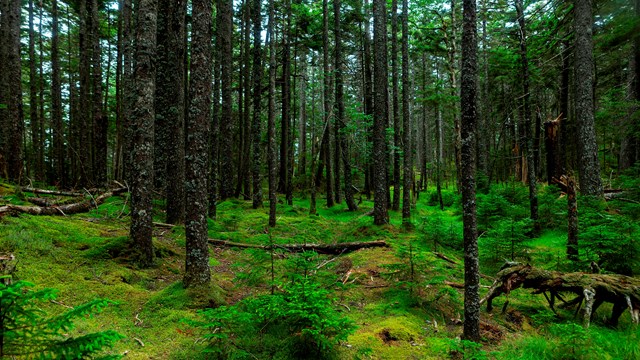
Forests
Acadia is blanketed with forests and woodlands that are situated in the transition zone of two ecoregions. 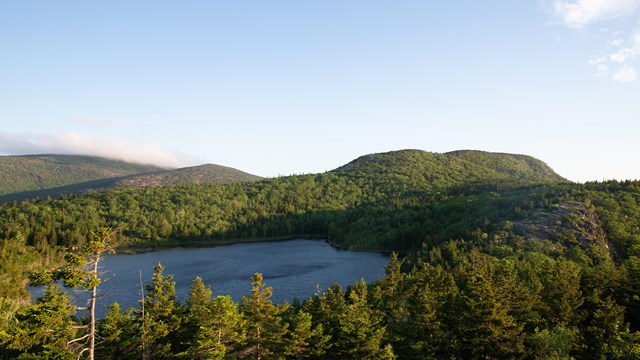
Mountains
Acadia is home to more than 20 mountains that rise from the sea and comprise much of Mount Desert Island. 
Lakes and Ponds
Lakes and ponds add shimmering contrast to Acadia's forested and rocky landscape. 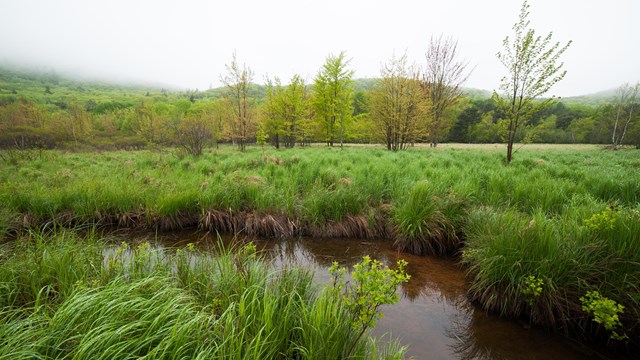
Wetlands, Marshes and Swamps
All classes of wetlands (swamps, marshes, and bogs) are found within the park. 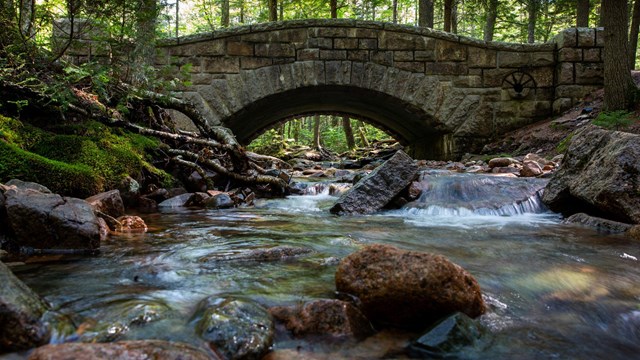
Streams and Watersheds
Learn about the running waters that provide life to wildlife, plants, and humans in Acadia National Park. 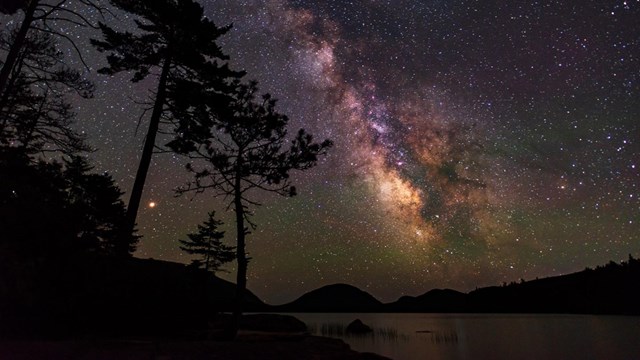
Acadia's Night Skies
Acadia National Park possesses remarkably dark skies for its proximity to Portland, Boston, and New York. 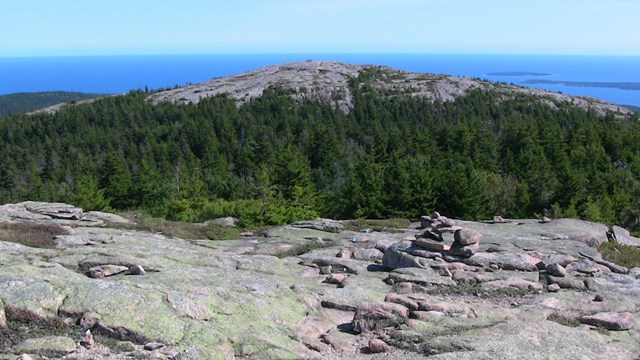
Scenic Views and Viewsheds
Learn about the natural and historically designed scenic views in Acadia as the lengths scientists are going to to protect them. 
Geologic Features & Formations
Learn about the remarkable visible geologic features of Acadia such as glacial erratics, striations, polish, chatter marks and more. |
Last updated: April 19, 2022
